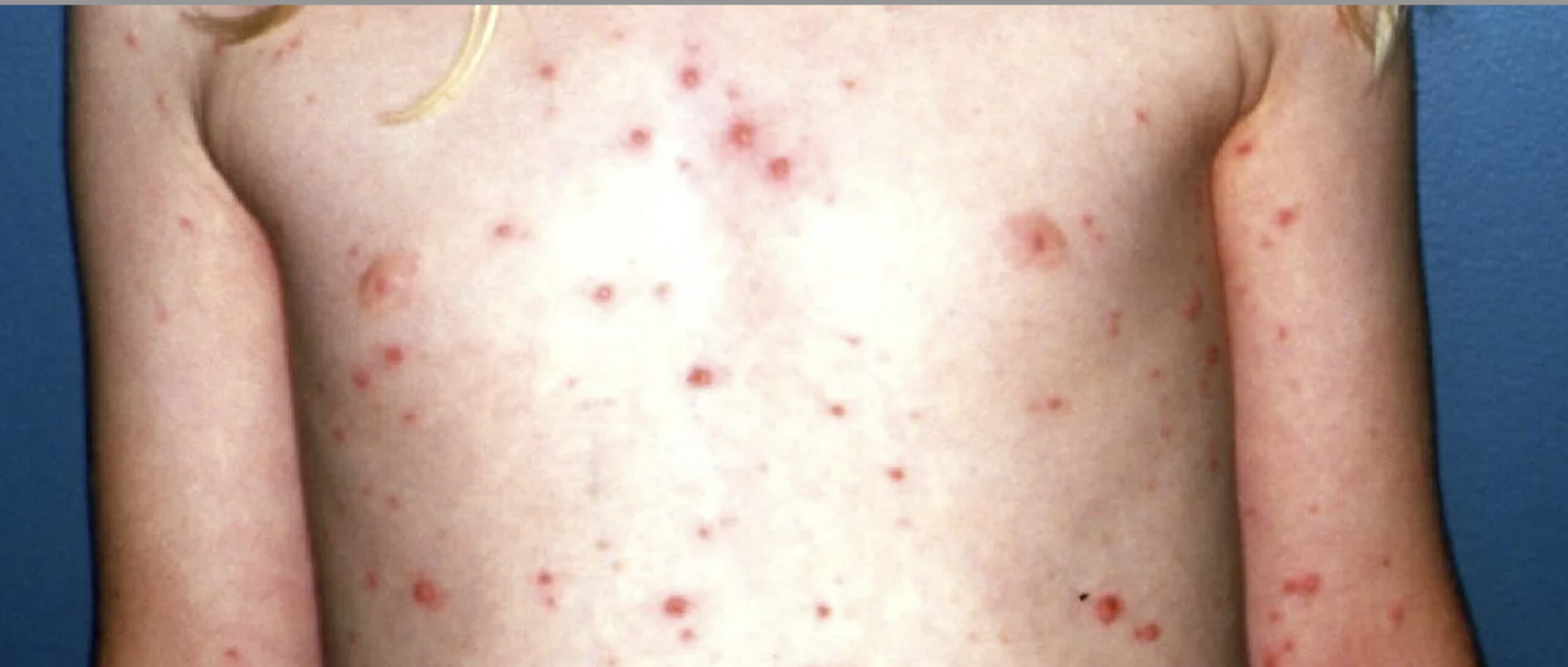What are the symptoms of Varicella-Zoster virus?
Varicella-Zoster virus (VZV) causes two distinct diseases: chickenpox (varicella) and shingles (herpes zoster). The symptoms vary depending on which condition is present:
Chickenpox (Varicella):
- Itchy Rash: Starts as small red spots that develop into fluid-filled blisters, which eventually crust over. The rash typically begins on the face, scalp, or trunk and spreads outward.
- Fever: Mild to moderate fever often accompanies the rash.
- Fatigue: Feeling generally tired and weak.
- Headache: Mild to moderate headaches can occur.
- Loss of Appetite: Decreased appetite is common.
- Muscle Aches: General body aches or discomfort.
Shingles (Herpes Zoster):
- Pain or Sensitivity: Often the first symptom, which may precede the rash by a few days. Pain is usually localized to a specific area on one side of the body.
- Rash: A rash appears as a band or strip of fluid-filled blisters on one side of the body, often around the torso or face. The rash follows the path of a nerve.
- Fever: Mild fever may occur.
- Headache: Similar to other viral infections, a headache may be present.
- General Malaise: Feeling of general discomfort or illness.
Postherpetic Neuralgia: After the shingles rash heals, some individuals may experience persistent pain in the affected area, known as postherpetic neuralgia.
Both chickenpox and shingles are caused by the same virus, but chickenpox typically occurs in children, while shingles is more common in adults, particularly those over 50 or with weakened immune systems. If you suspect you have symptoms of either condition, it’s important to consult a healthcare provider for proper diagnosis and treatment.
What is the treatment for chickenpox?
Treatment for chickenpox (varicella) primarily focuses on relieving symptoms and preventing complications. Here’s how it is generally managed:
- Symptom Relief:
- Antihistamines: Over-the-counter antihistamines can help alleviate itching caused by the rash.
- Calamine Lotion: Applying calamine lotion or similar topical treatments can soothe itching and reduce discomfort.
- Cool Baths: Taking cool baths with baking soda, colloidal oatmeal, or anti-itch solutions can help relieve itching and soothe the skin.
- Pain Relievers: Acetaminophen (Tylenol) can be used to reduce fever and relieve pain. Avoid aspirin in children with chickenpox due to the risk of Reye’s syndrome.
- Antiviral Medications:
- Acyclovir: In some cases, especially for those at higher risk of complications (such as adults, pregnant women, or individuals with weakened immune systems), antiviral medications like acyclovir may be prescribed. These are most effective when started within 24 hours of the onset of the rash.
- Preventing Complications:
- Stay Hydrated: Drink plenty of fluids to stay prevent dehydration, especially if fever is present.
- Avoid Scratching: Keeping nails trimmed and encouraging children to avoid scratching the rash can help prevent bacterial infections of the skin.
- Isolation:
- Avoid Contact: To prevent spreading the virus to others, especially those who are unvaccinated or at high risk, it’s important to avoid close contact until all the blisters have crusted over.
- Consult a Healthcare Provider:
- Medical Advice: If there are concerns about severe symptoms, complications, or if the affected individual is at higher risk, consult a healthcare provider for personalized advice and treatment options.
Most people recover from chickenpox without serious complications, but managing symptoms effectively can make the illness more comfortable and help prevent secondary infections.
What is the treatment for shingles?
Treatment for shingles (herpes zoster) focuses on alleviating symptoms, reducing the duration of the outbreak, and preventing complications. Here’s a general approach to managing shingles:
- Antiviral Medications:
- Acyclovir, Valacyclovir, or Famciclovir: These antiviral drugs can help reduce the severity and duration of shingles if started within 72 hours of the rash appearing. They work by inhibiting the replication of the virus.
- Pain Relief:
- Over-the-Counter Pain Relievers: Acetaminophen or ibuprofen can help relieve mild to moderate pain.
- Prescription Pain Medications: For severe pain, stronger medications such as opioids or nerve pain medications like gabapentin or pregabalin may be prescribed.
- Topical Treatments: Capsaicin cream or lidocaine patches can provide localized pain relief.
- Corticosteroids:
- Oral Corticosteroids: These may be prescribed in some cases to reduce inflammation and pain, particularly if the rash is severe or widespread. They are usually used in combination with antiviral medications.
- Preventing Secondary Infections:
- Keep the Rash Clean and Dry: To prevent bacterial infections, keep the rash clean and avoid scratching. Using mild soap and water to gently cleanse the area can be helpful.
- Soothing the Skin:
- Cool Compresses: Applying cool, moist compresses to the affected area can help soothe itching and discomfort.
- Oatmeal Baths: Soaking in a bath with colloidal oatmeal can also provide relief from itching.
- Shingles Vaccine:
- Post-Recovery Vaccination: After recovering from shingles, the shingles vaccine (such as Shingrix) can help prevent future outbreaks. It is typically recommended for adults over 50.
- Consult a Healthcare Provider:
- Medical Advice: Consulting a healthcare provider is essential for personalized treatment, especially if the shingles outbreak is severe, complications arise, or if the individual is at higher risk.
Early treatment can help manage symptoms more effectively and reduce the risk of complications, such as postherpetic neuralgia, which is persistent pain in the area where the rash occurred.

Leave a Reply
You must be logged in to post a comment.